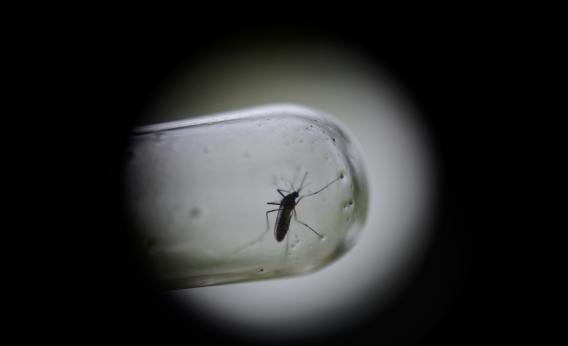Look, I’m just as invested in the domestic use of drones to fight mosquitoes as you are. It’s just, you’re going to see a whole slew of headlines over the next few days that make it seem as though we’re launching an army of search-and-destroy bots with the sole purpose of annihilating the blood-suckers. I want it to be true. But it just isn’t.
The Florida Keys Mosquito Control District does plan to toss a Condor Aerial Maveric drone into the sky and see whether its infrared sensors can be used to detect the shallow pools where mosquitos breed. If the drone is successful, it would help Mosquito Control treat targeted areas with larvicide before the adults can emerge. The district is also testing a handful of less buzzy ideas, including placing water sensors and cameras on offshore islands known to harbor the needle-nosed nippers. (You can imagine these being more effective than an $80,000 drone but, you know, snore …)
I suppose impressing tech bloggers isn’t the primary function of Mosquito Control, but as Evan Ackerman points out over at IEEE Spectrum, they could really wow us simply by cobbling together a few existing technologies. Specifically, what if that lame ol’ camera drone was equipped with larvicide sprayers?
Better yet, how about fish cannons?!
One of the most effective and environmentally friendly ways to combat skeeters is to drop a few mosquitofish into their breeding grounds. The fish gobble up mosquito larvae and keep breeding until the supply is exhausted. In fact, following Hurricane Katrina and the 2004 Indian Ocean Tsunami, volunteers fanned out to drop mosquitofish in flooded swimming pools in an effort to fight a litany of mosquito-borne illnesses.
Now, any student of mosquito literature knows there’s one surefire way to the Internet’s heart, and that’s the “Photonic Fence.” This anti-mosquito laser zaps insects out of the sky in a fashion so awesome, you won’t give a damn how ineffective it would be to fight pests wing-to-wing. (To Ackerman’s credit, he brings it up only as a lark.) While we’re at it, we might as well train the freshman class of nanodrones and hummingbird bots to do battle with insects in a microcosmic machine vs. monster re-enactment of Pacific Rim.
In other words, we’re still a ways off from practical mosquito destruction by robot. But as they say, the best offense is a good defense. A group of scientists is working on something called the Kite Patch, which claims to render its wearers invisible to mosquitos, though a review in Malaria Journal warns the product still requires quite a bit of testing. (We’ll see whether it works soon enough. The project’s indiegogo campaign is $400,000 past its goal with two weeks remaining.)
If nothing else, the Kite Patch reminds us that no matter what the next round of headlines say about slaying mosquitos by slingshot, satellite, or Sharknado, there are 3.3 billion people around the world who live with the daily threat of malaria. And they don’t need drones. They need $10 worth of mosquito netting.
